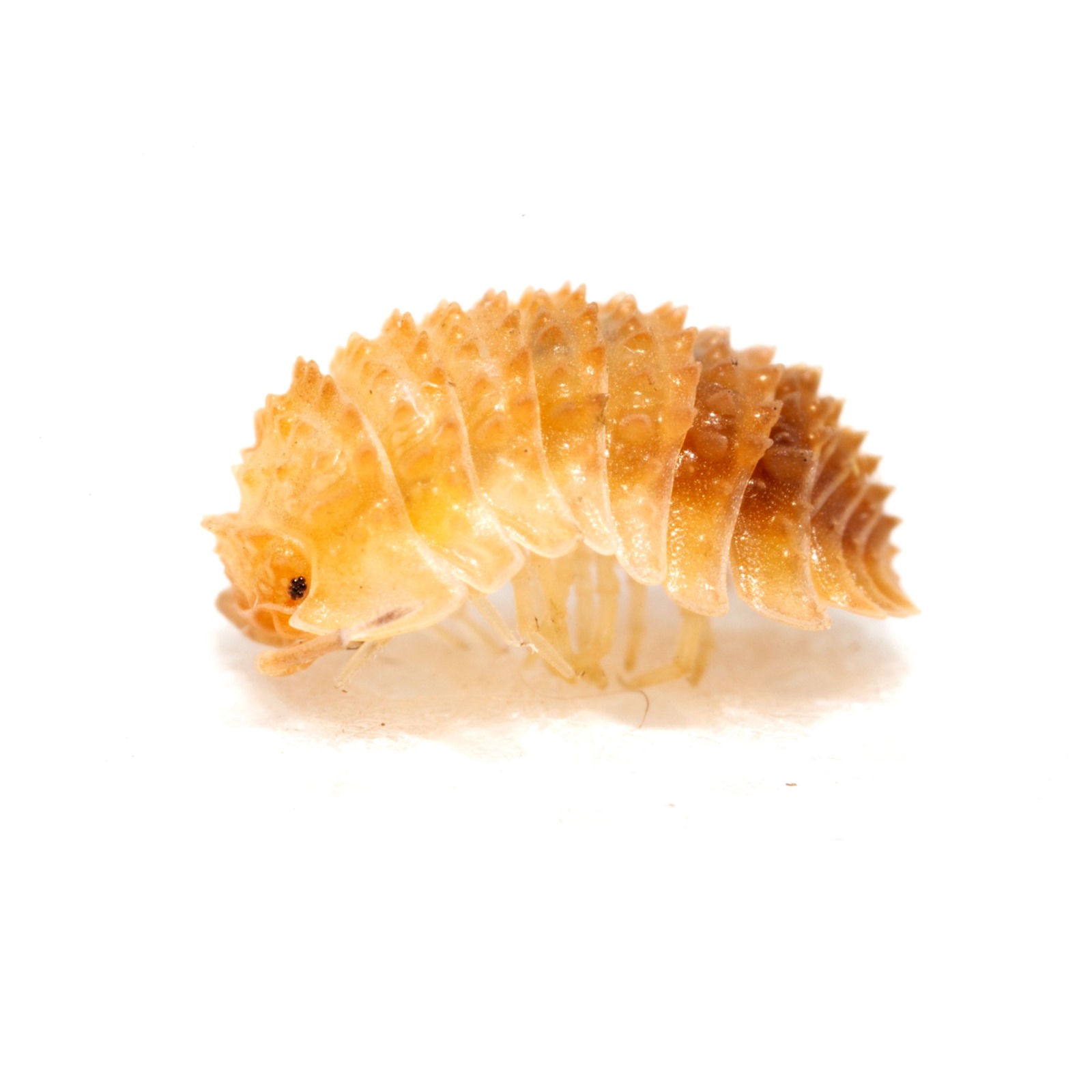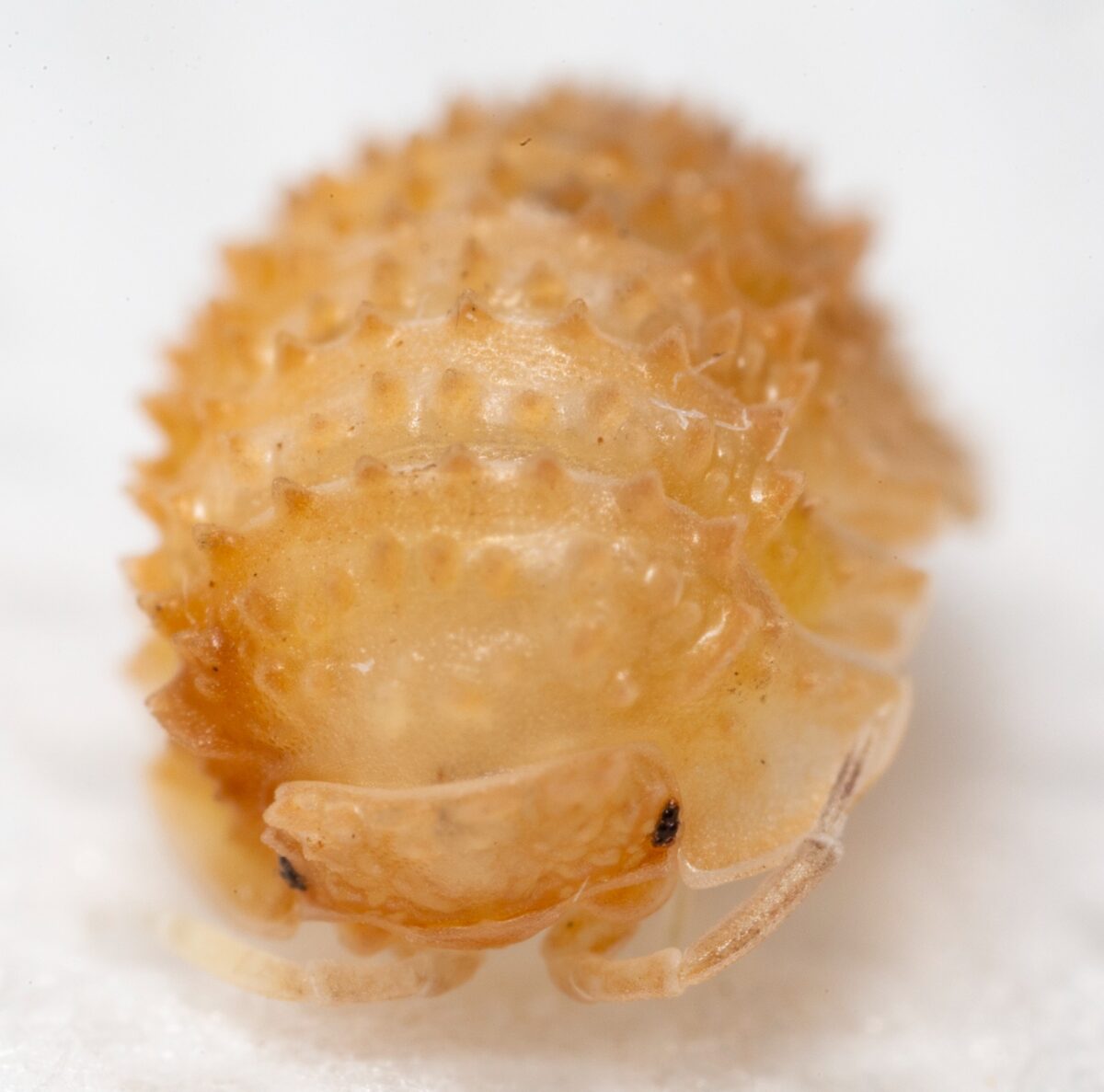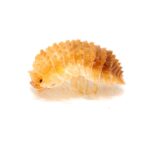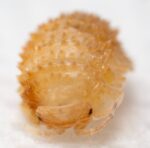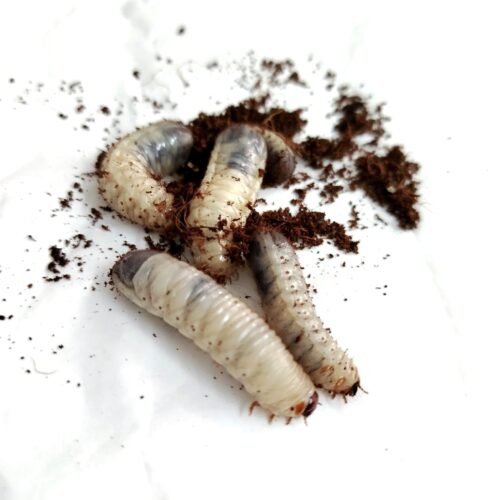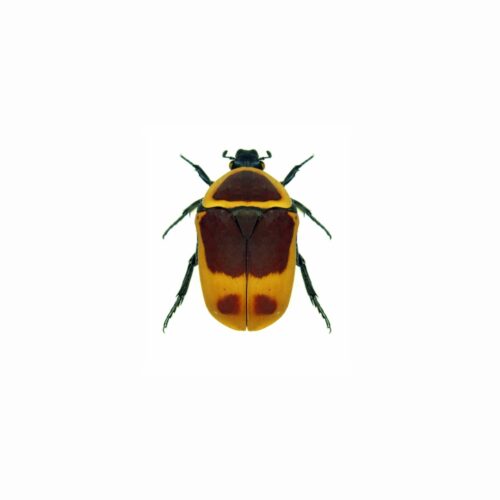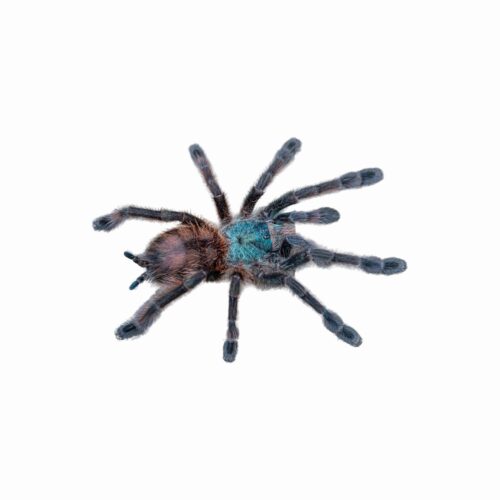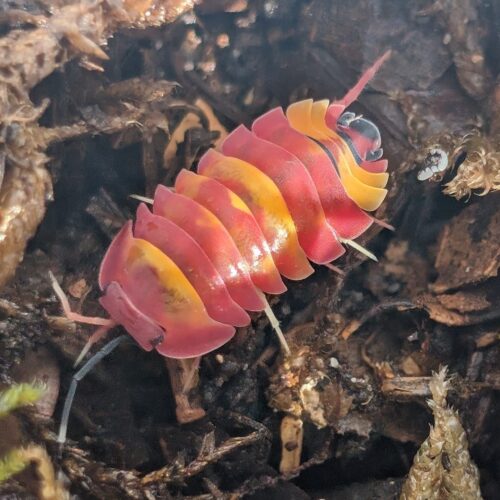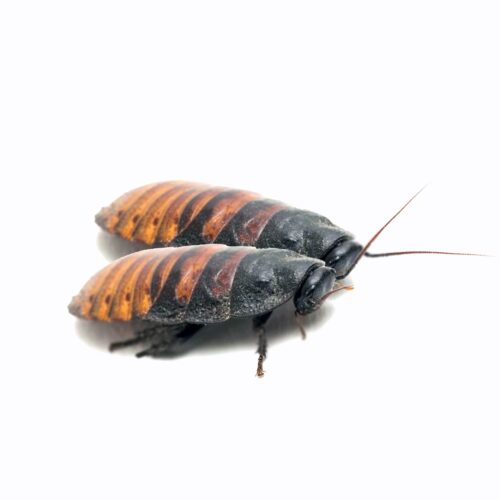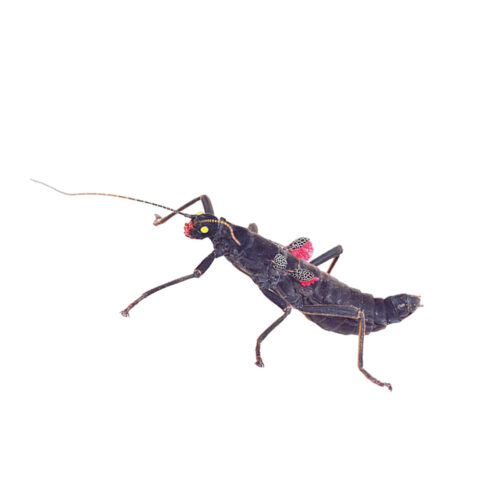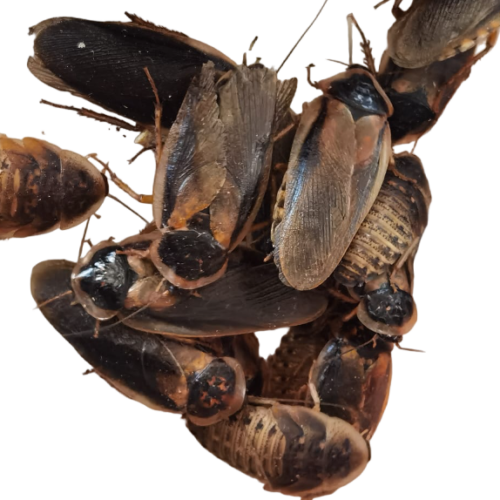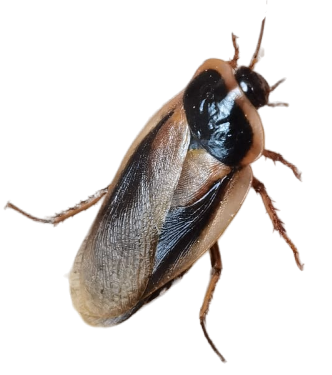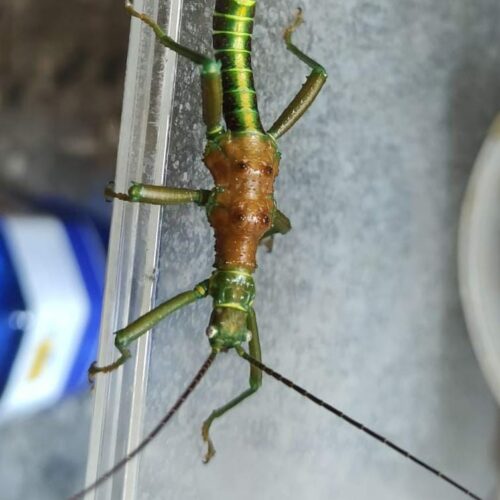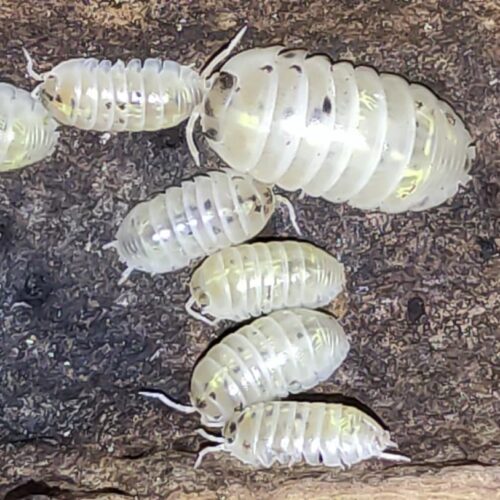“Shelfordella lateralis (ex tartara)(10 units)” has been added to your cart. View cart
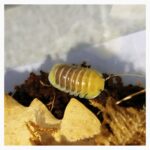
Cubaris jupiter
20,00€ Original price was: 20,00€.15,00€Current price is: 15,00€.
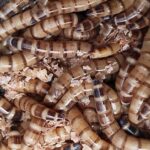
Zophoba morio
3,00€
Cristarmadillidium muricatum
2,50€ – 10,00€Price range: 2,50€ through 10,00€
A natural wonder with Cristarmadillidium muricatum! Discover how tiny isopods can inspire greatness. Add a touch of wonder to your terrarium with this furry isopod. Get it now!
SKU:
N/A
Categories: Arthropods, Isopods
Description
Scientific Name: Cristarmadillidium muricatum Common Name: Hairy Woodlouse
Description:
- Size: Adults typically measure between 1.5 and 2 centimeters in length.
- Color: Their coloration ranges from dark brown to lighter shades, with a hairy texture that gives them a distinctive appearance.
- Body: They have a segmented, laterally flattened body, resembling a miniature suit of armor.
- Antennae: They possess a pair of long, slender antennae used for exploring their environment.
- Legs: They have seven pairs of stout legs, enabling them to move agilely in their habitat.
Habitat:
- Cristarmadillidium muricatum is native to subtropical and tropical regions, where it inhabits humid and dark environments such as tropical forests and jungles.
- They prefer areas with moist soil and decaying organic matter, where they can find food and shelter.
Behavior:
- They are nocturnal, primarily active during the night.
- They feed on decaying plant matter and other organic debris found on the forest floor.
- They tend to be gregarious, living in groups and seeking shelter under logs, leaves, or other natural hiding spots.
Reproduction:
- Reproduction in terrestrial isopods, including Cristarmadillidium muricatum, involves internal fertilization.
- Females lay eggs in a specialized abdominal pouch called a marsupium, where the eggs are incubated until they hatch into juveniles.
Ecological Importance:
- Like many other isopods, Cristarmadillidium muricatum plays an important role in the decomposition of organic matter, contributing to nutrient cycling in the ecosystems where it resides.
- Additionally, it can serve as prey for various animal species, thus contributing to local food chains.
Additional information
| Options |
1 unit ,5 units |
|---|
Related products
Dola larvae (pachnoda)
5,00€
there is stock
Dola larvae (Pachnoda): the nutritious and easy-care solution for your pets! With their diet rich in fruits and vegetables, they are an excellent source of protein and contain virtually no fat ideal for ants, arthropods, reptiles and amphibians. Choose the best for your pets!!
Select options
This product has multiple variants. The options may be chosen on the product page
Caribena versicolor
26,00€ – 120,00€Price range: 26,00€ through 120,00€
Sold out
Discover the charming Caribbean versicolor tarantula for your terrarium. With its beautiful coloration, it is a perfect addition for any spider fan. We recommend having previous experience with tarantulas or arachnids in general. Bring beauty and fascination to your space with this captivating species.
Select options
This product has multiple variants. The options may be chosen on the product page
Merulanella Scarlett
36,00€ – 260,00€Price range: 36,00€ through 260,00€
Sold out
Select options
This product has multiple variants. The options may be chosen on the product page
Gromphadorhina portentosa
1,50€ – 12,00€Price range: 1,50€ through 12,00€
there is stock
Discover the fascinating Madagascar hissing cockroach! Perfect as an exotic pet or for research projects. Its peculiarity and ease of care make it a unique choice. Dare to explore the world of these incredible creatures!
Select options
This product has multiple variants. The options may be chosen on the product page
Peruphasma schultei
15,00€ – 22,50€Price range: 15,00€ through 22,50€
Sold out
Select options
This product has multiple variants. The options may be chosen on the product page
Blaptica Dubia
1,99€ – 9,00€Price range: 1,99€ through 9,00€
there is stock
Blaptica dubia. (live food)
Discover this fantastic food loaded with protein, ideal for ant colonies. An ideal power source to have an entire colony of ants active. This live food is ideal for feeding certain insects, reptiles, amphibians.
Select options
This product has multiple variants. The options may be chosen on the product page
Armadillidium vulgare magic potion
3,00€ – 12,50€Price range: 3,00€ through 12,50€
there is stock
Select options
This product has multiple variants. The options may be chosen on the product page

